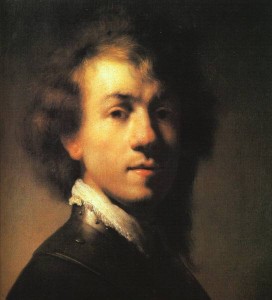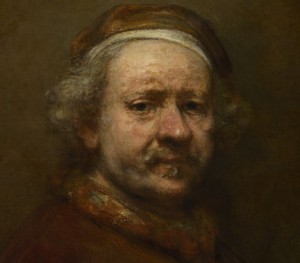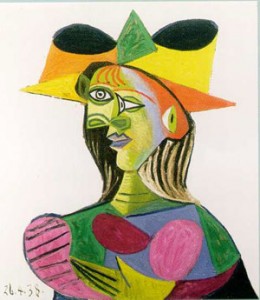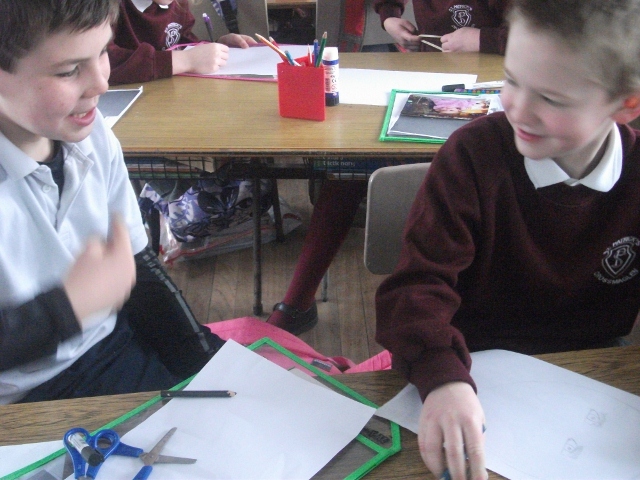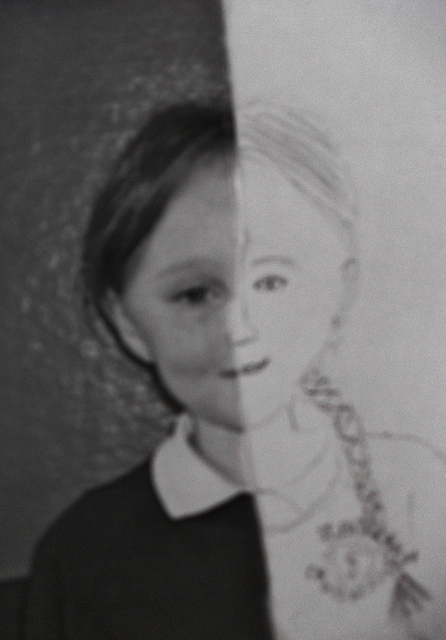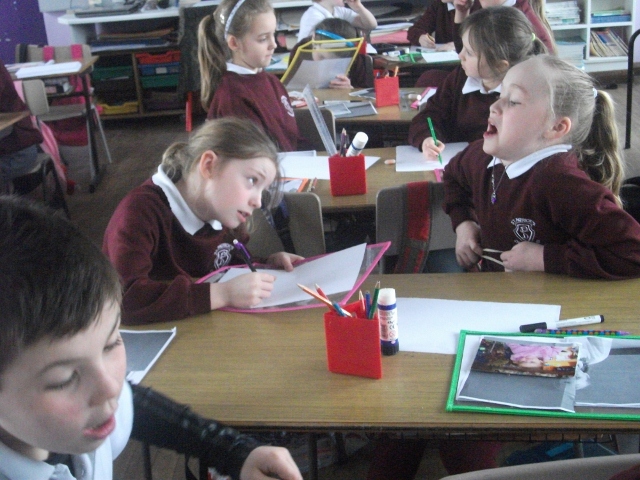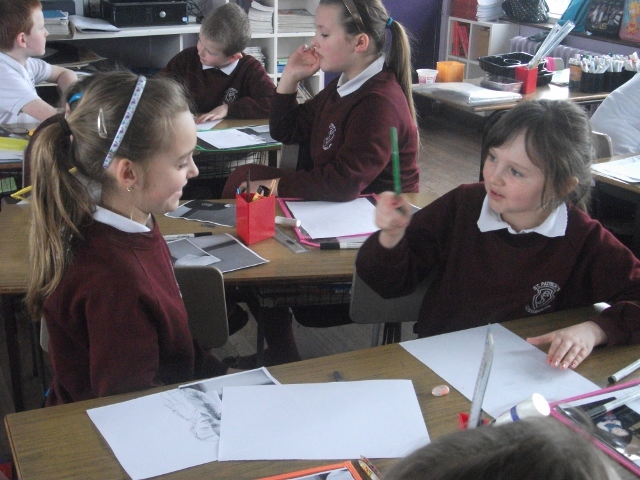Our second session began in earnest, at first thinking about the expression: if the wind changes direction, your face will stay (looking grumpy?), which I thought only my mother and granny said to me, but the class had heard this too!
But this got me thinking about how time changes our faces and we siad ‘hello’ to Mr Rembrandt van Rijn, who lived in the 17th century (he was born 1606 and died 1669), but who left us some very beautiful self-portraits. We looked at one he made when he was a young man aged 23. The children offered some lovely descriptions of the way he looked, admiring his hair and bright eyes. One child described his look as ‘calm’, which is very fitting:
Next we looked at a self portrait, made in 1669 when he was 63 years old and the children were truly astonished…
We talked about the expression – the look in his eyes and the children thought he looked sad, as well as having very grey hair and lined face. Rembrandt experienced much sadness in his life, losing three of his children and his wife at a young age.
We were eager to set to work and make a self-portrait using an A4 printed photograph that the children had taken of themselves in preparation for today. We discussed the term ‘current‘ and ‘contemporary‘ to describe a picture or portrait made by us today.
We began by folding the paper print-out vertically down the centre of the face and cutting the picture into half, so that we could glue one half to a new sheet and complete the portrait by drawing it …
There were some wonderful portraits made and Mrs O’Sullivan, the teacher toured the class with a camera to document the work. Some children brought their finished faces close to the screen so I could see. I was very impressed with all this work.
The children can complete a second portrait with the remaining half of printed portrait and use a photograph of themselves taken when they were very young to complete the picture. I am looking forward to seeing the results…
We then said ‘hello’ to Pablo Picasso, Spanish artist 1881 – 1973 who had made a series of paintings of heads by including two different views of the head – straight on and a profile view.
The children enjoyed working in pairs to draw each other face on, onto an A4 sheet and then used a sheet of acetate which is transparent, to draw with a marker a profile view.
The two images could be moved over each other and looked through to see a multi-viewed portrait… click the link below to see the children’s work in progress.
